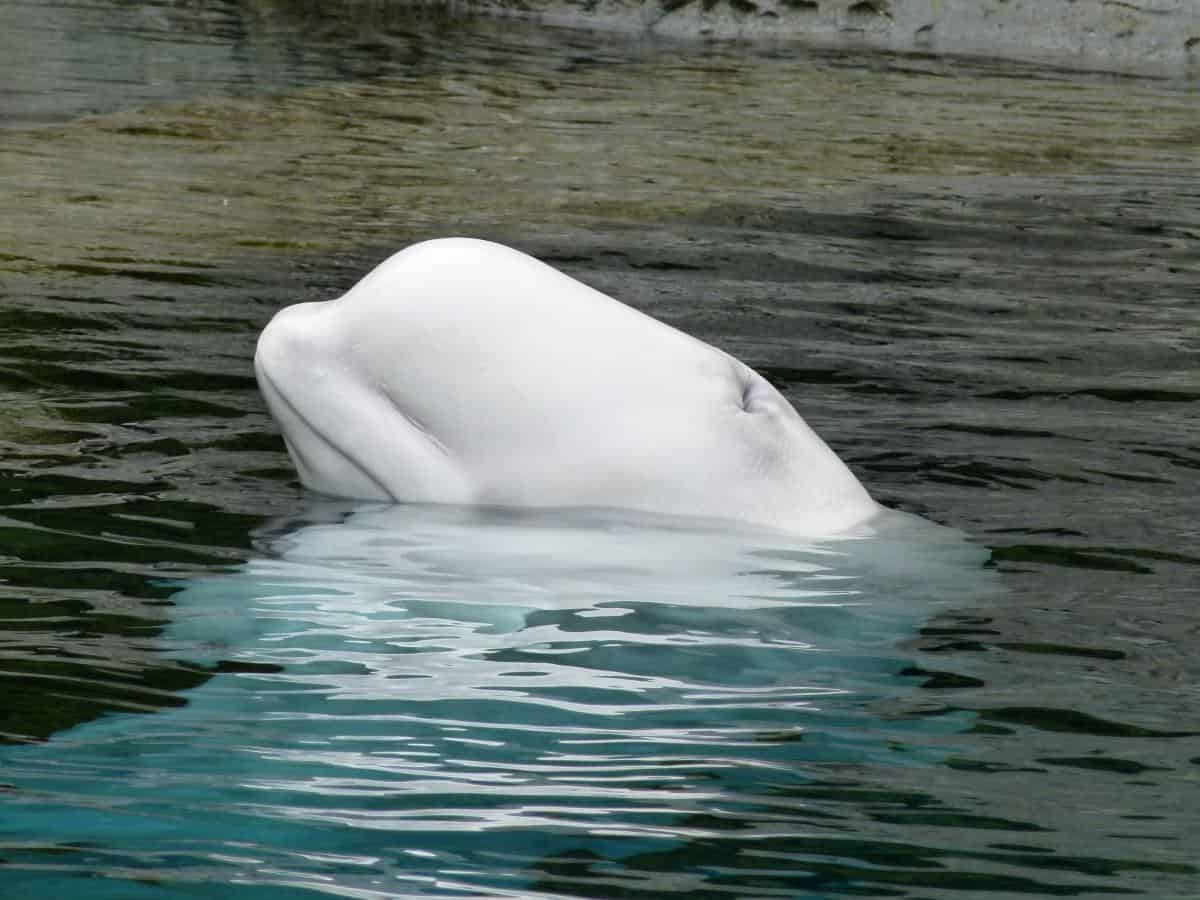Tecla is in Big Whale Territory
If Classic Sailing state that a voyage has good for whale watching then this highlight is carefully vetted. Whilst there is often a slim chance of seeing whales on almost any offshore voyage, we will not add this label to every voyage. We base it on the sailing grounds that the ship is exploring,the time of year and whether it is a breeding or feeding ground for whales. It might also be that your sailing playground sits on a whale migration route or there is some querk of nature that makes a particular bay popular with dolphins and whales.
Tall ship Tecla explores the northern parts of Scotland, the Outer Hebrides, the fast currents of the Pentland Firth, Orkney and Shetland, the whale rich fishing grounds of Iceland and the Faroes. All these sailing grounds are in cool, deep waters with rich ecosystems so they have good cetacean watching potential Late summer she heads into the Arctic Circle and this opens up possibilities of spotting rarer whales species like Narwhal or Beluga.
Our Choice of best whale watching voyages on Tecla
1. North Coast of Iceland – Isafjordur to Akureryi
Iceland is among one of the best whale watching destinations in Europe. 23 different species of cetaceans can be found around Iceland’s coasts. The wide and deep bays of North Coast of Iceland are where most the day sail whale watching takes place. Icewhale website claims sightings on this close to the coast trips runs at 90% in summer. Companies like North Sailing in Husavik back this up with daily sighting records.
This regular voyage by Tecla along the North coast gives you the best of both worlds – the wild offshore coast where you are likely to be alone with any whales you spot as well as sailing into the whale hot spots in bays like Eyjafjordur.
We have to say a big thank you to North Sailing for a remarkable aerial photo of two blue whales dwarfing schooner Hildur. They run day sails and shorter whale watching trips from the next bay eastwards from Akureyri. Skjalfandi Bay is probably THE best spot in Iceland for whale watching if you are on a land based holiday and want a informative whale watching trip. They even have fossil fuel free options. Check out North Sailing website for some of the incredible statistics and details of their day trips.
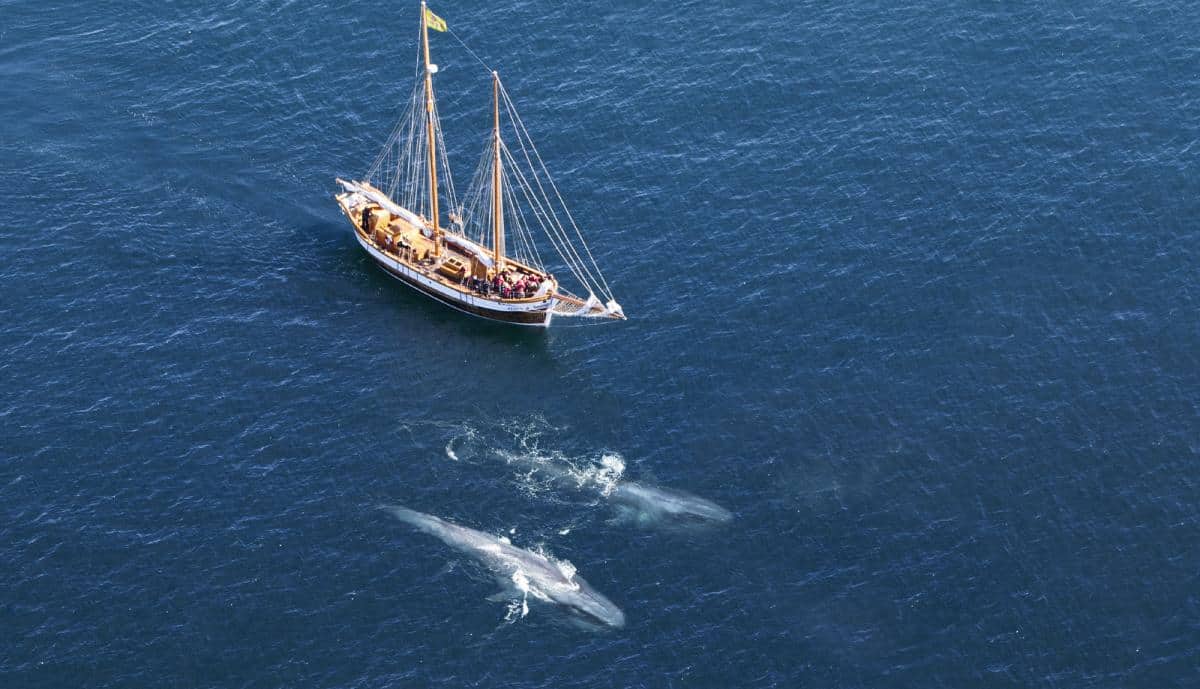
2. West Coast Voyage – Reykjavik to Isafjordur
Almost as good is the West Coast voyage. Travelling around Reykjanes Peninsula and across big bays like Breidafjordur, plus notching up the offshore miles all increases your chances of seeing a whale fluke or a feeding frenzy. You are still on the shallow continental shelf with lots of variety in the seabed depths due to the volcanic nature of Iceland. This means the currents create upwellings of plankton – all good for fish and whales.
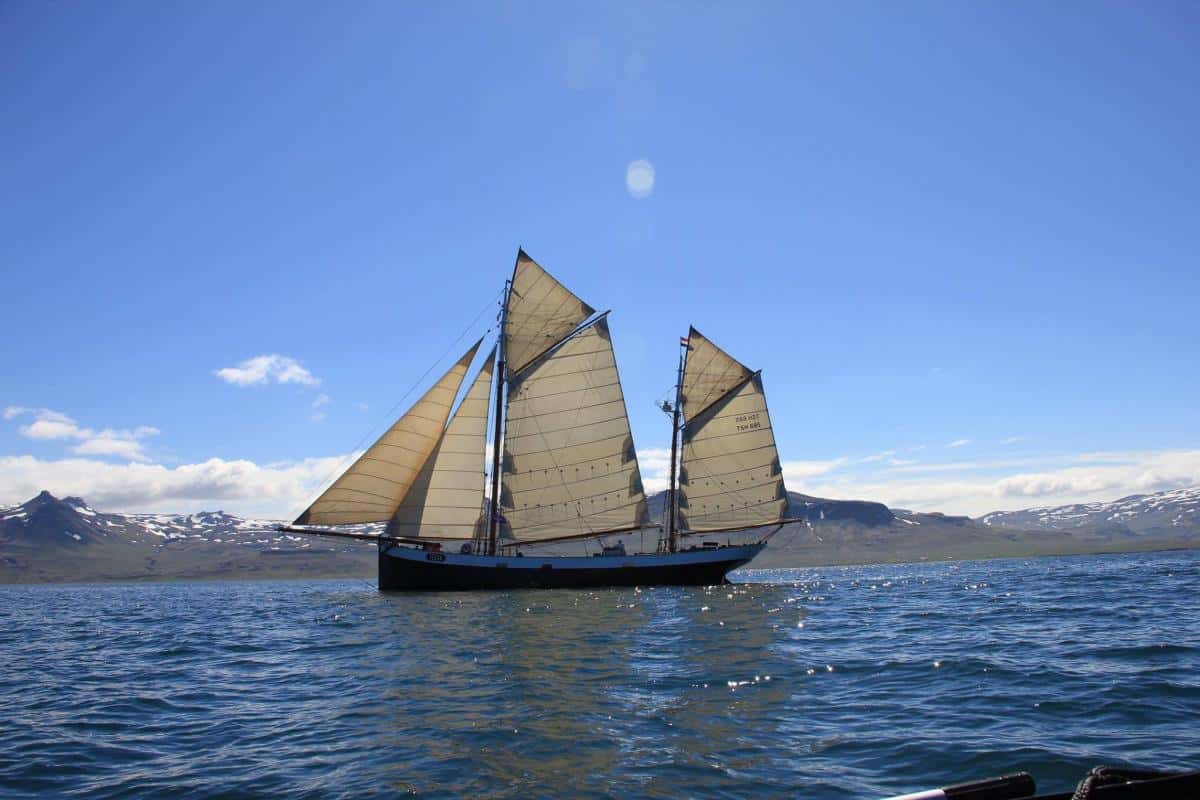
What whales might I see Around Iceland in Summer ?
This information is from the brilliant Icelandic Whale Watching Association website was called IceWhale. It is a project involving Icewhale and IFAW. Its aim is inform and educate tourists about the facts regarding whale meat in Iceland and to gain their support to end commercial whaling. The campaign is supported by the Icelandic whale watching companies like North Sailing (owners of schooners Opal, Hildur and Donna Wood) and Icelandic restaurants that have agreed not to put whale meat on their menus.
Icelandic Whales – Meet Us, Dont Eat Us” Icewhale mission statement
Humpback whales – These are often acrobatic with white flukes and long white pectoral fins (flippers) – distinctive hump like dorsal fin. Length up to 17 metres and reaches speeds of 27 km/hr (Common in Icelandic Waters from April to October)
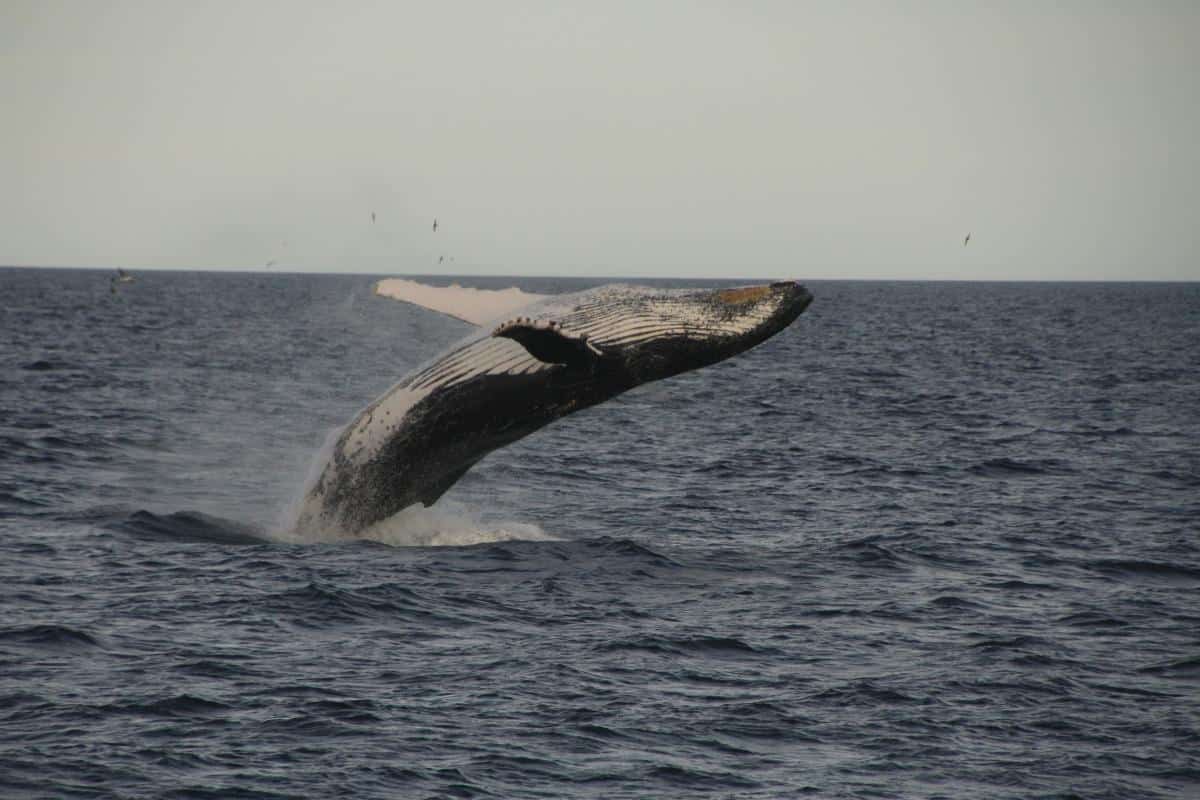
Sperm Whales – Think ‘Heart of the Sea’ or Moby Dick – blunt headed with a mouth of teeth. They feed on squid in deep water so more likely to see them off the West coast of Iceland than in the bays in the North. Up to 20 metres long and swim at speeds upto 30 km/hr
Fin Whale – Largest whale species after the blue whale. Their blow reaches the dizzy heights of 9 metres. Still hunted by Icelandic whalers as Government claims they are not endangered. Rare to sight in Iceland but Autumn around Reykjanes Peninsula is a good spot and you might get lucky on the North Coast in summer.
Blue Whale – A mammal larger than even the biggest dinosaurs and it is still here on this planet. Size upto 27 metres. Weight upto 120 tons. Ice Whale website describes the tail fluke as “wide as a football net (8 metres). Commonly seen in North Iceland from late spring to early summer. Sometimes seen around the Sneafellsnes peninsula (west Iceland)
Minke Whale – a smooth and streamline baleen whale with white bands on each flipper. Most commonly seen in the South of Iceland (and further south in Shetland and Scottish waters). Often solitary or small pods of 2-3 whales.
Orca (Killer Whale) – commonly seen in West Iceland in Winter and spring to early summer. Also seen off the Westman Isles and around Reykanes Peninsula so the Tecla voyage from Scotland ot Iceland via Faroes and Westman Isles might be a good voyage. Debbie saw Minke whale on this trip in 2017 but no Orca. Tecla has seen Orca on the way to Greenland.
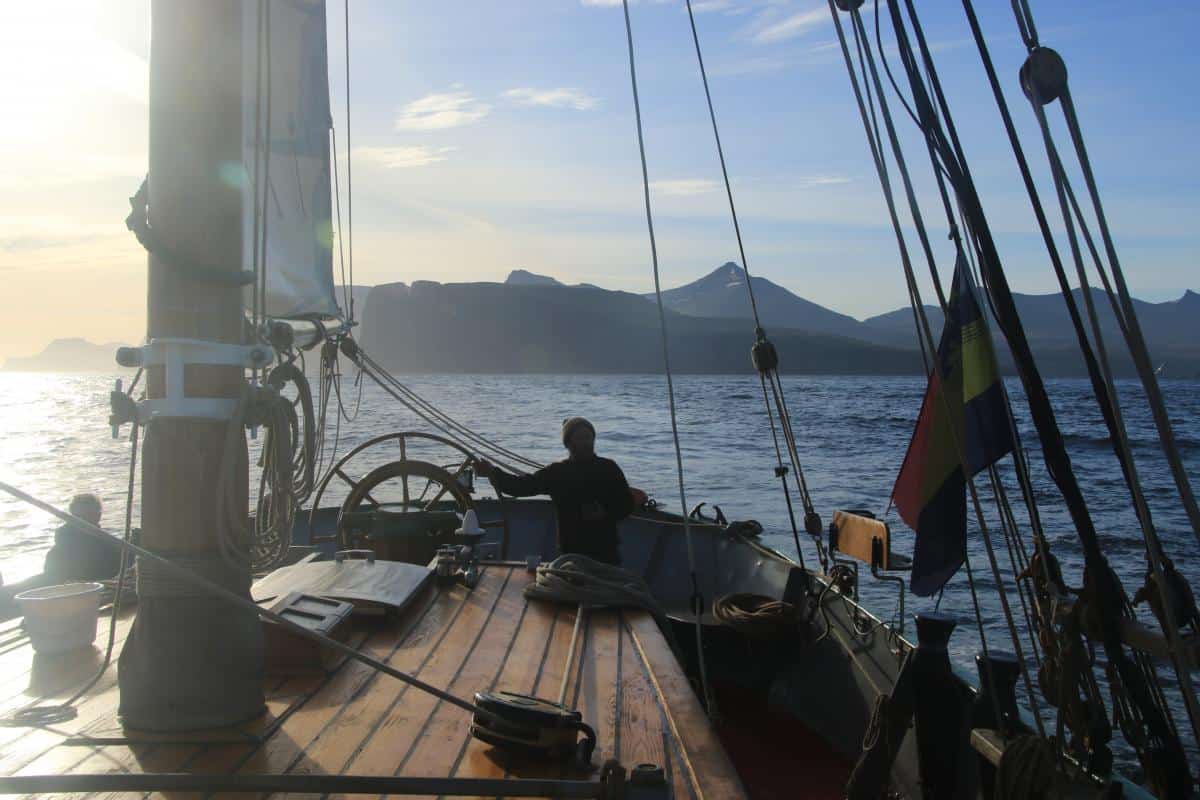
3. Ocean Voyage – Iceland to West Greenland (2019)
New for 2019 Tecla is heading SW from Iceland to round the southern tip of Greenland and explore the SW coast. This is a pioneering route that few charter vessels sail, so we can only make guesses at the whale watching opportunities on the way to Cape Farewell (Cap Farvel)
Up to 15 different kinds of whales live in the waters around Greenland, so not as many as Iceland and sightings are more rare encounters. This could purely be the lack of people actually sailing these waters. Humpbacks, finbacks and minke whales are regularly spotted between July and September in the south and west of Greenland.
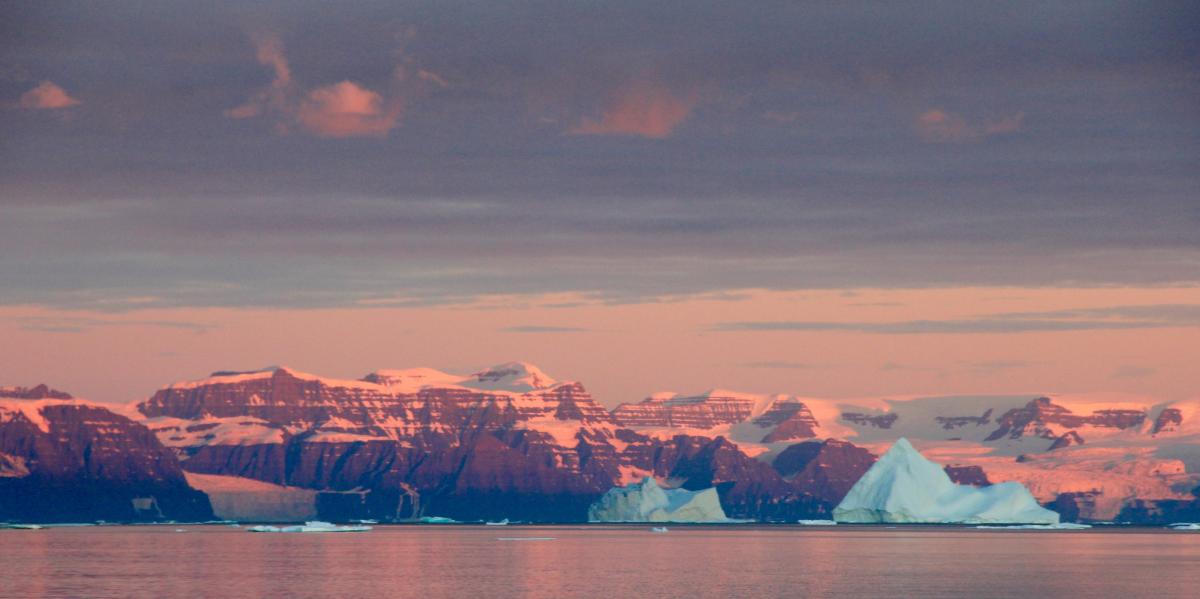
4. West Greenland Coast Nuuk to Disco Bay (2019)
This voyage is heading North of Nuuk and back into the Arctic Circle so the species list changes to some more unusual whale species.
Narwhals, belugas and bowhead whales stay close to the border of the pack ice and move far up north as the ice starts to break up in early summer. Tecla has seen Narwal near the pack ice on the East Coast around 70 degrees North, but you are unlikely to spot them until she sails well North again on this West Coast. you are probably looking at the NW Passage voyage on Tecla for chances to spot them.
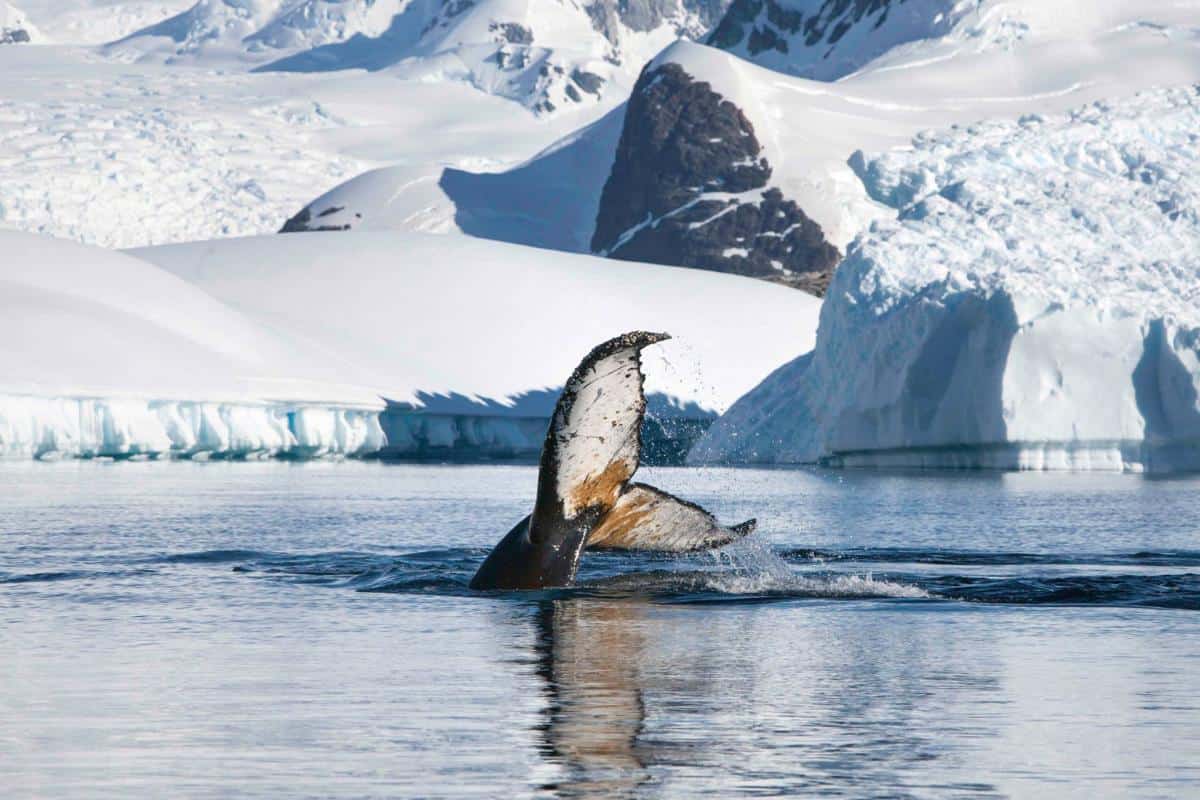
5. Tecla North West Passage Expedition (Dates to be announced late summer 2019)
Bowhead whales and narwhals are the whales with the northernmost habitat of all whales worldwide. These animals are the ones with the northernmost habitat of all whales, usually sticking to the area at the border of the pack ice. Therefore it’s almost impossible to meet them on classic tourist routes. Trips to the pack ice border have the character of an expedition. As Tecla is planning to use Disko Bay as a spring board for an attempt on the North West Passage you are leaving normal tourist whale watching territory far behind. This will be a tough expedition and the first tall ship to attempt the NW passage for a few hundred years. For committed whale watchers and wilderness lovers this would be a trip of a lifetime.
